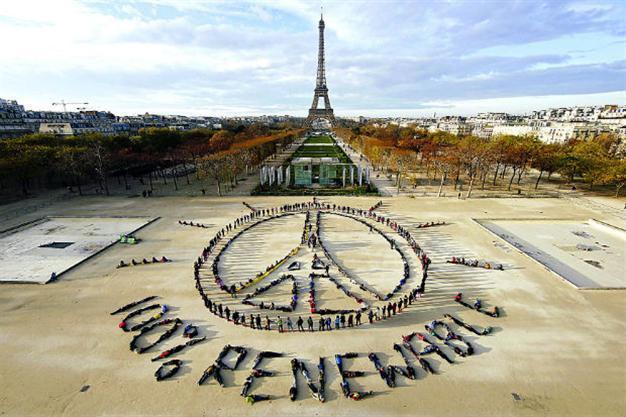Reinforce climate protection, create jobs, and improve competitiveness
Barbara Hendricks

REUTERS photo
With regard to the landmark international climate conference in Paris, it is obvious that 2015 marks a turning point in international efforts to combat climate change. For the first time in 25 years of climate diplomacy we see that all major emitting countries are prepared to take concrete action to reduce or limit.
There is a growing consensus that the future of this planet is marked by the phase-out of fossil-fuel use in the course of this century. What may look like a far-off aspiration is in fact a very specific action agenda that requires significant changes in investment patterns from today on.
Germany has come a long way in 25 years of climate policy: We reduced emissions by about 27% since 1990. Our national climate targets are ambitious and still require additional action. Therefore, in December 2014 the German government adopted the climate action programme 2020 in order to ensure the necessary reductions to achieve our 40 percent reduction target in 2020.
In order to achieve our ambitious emission reduction targets for 2030 and 2050 we need to facilitate changes in production and consumption patterns, for instance in the transport sector, but also in the way cities are organised, energy is managed, and how agriculture meets the need for a healthy nutrition. A number of structural changes are already under way. The car industry is investing serious amounts of capital into electric vehicles. The IT industry is investing massively into smart home solutions. Mobility of people in cities becomes smarter with advanced communication technology.
All of these examples significantly spur innovation and investment as well as represent major opportunities for economic growth and new jobs. Comparable potentials for new and better jobs are there in energy services, future mobility and smart buildings. What is needed are the right incentives for these investments to become part of the solution to climate change. It is encouraging to see that many new smart technologies are developing even more dynamically outside Germany and Europe, but this also implies that we in Europe need to keep pace with evolving technologies to secure and increase our competitiveness.
In order to kick-start a broad debate in society on how the transition to low carbon alternatives can be successfully managed we have invited civil society to discuss about how to reach our ambitious climate targets for 2030 and 2050. We will draw up a national Climate Action Plan 2050 by summer next year, addressing all relevant sectors and building on that dialogue.
Germany’s efforts to decarbonise are closely intertwined with the European context, not least through the Emission Trading System. Europe has clear medium- to long-term climate targets: reducing greenhouse gas emissions by 20% until 2020, at least 40% by 2030 and 80-95% until 2050 (all versus 1990 levels).
The extensive 2030 framework agreed by EU leaders last autumn has clearly defined the level of ambition and the distribution of efforts in the ETS and non-ETS sectors. We will need to further develop this framework with regard to questions such as: How to include emissions and sinks from land-use and forestry into the climate target while maintaining environmental integrity? How to design a governance system for renewable energies which ensures target achievement?
And: the climate target of minus 40% is a minimum target. We need to actively explore the option of raising ambition beyond this level, including through the use of high-quality international carbon market mechanisms. Experience shows that they can trigger investments and create best practices in developing countries.
The Paris agreement needs to send a clear signal to the world that we need to foster a major transformation, shifting investments from brown to green, literally “shifting the trillions”. This should be our collective goal.
The aggregate amount required for this global transformation of our energy systems, our economies at large is in the order of the trillions of dollars – coming from domestic and international sources as well as public and private investments, as we again heard i.a. from IPCC and the New Climate Economy.
In order to mobilize the necessary means we need an upward spiral of ambition. Changing economic and environmental realities have to be taken into account. New funding streams, including South-South have to be taken on board. Support provided should reflect increased ambition in mitigation and adaptation actions.
This will include creating enabling environments to prepare the ground for investments. We need to implement ambitious climate policies and send thereby the market signals needed for the transformation.
I am convinced that medium- and long-term competiveness will be redefined by Paris – not only in Germany or Europe, but on a global scale. Companies and investors should carefully position themselves to be part of the solution rather than relying on traditional business models.
